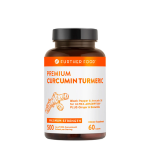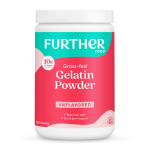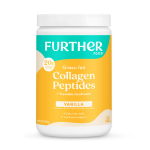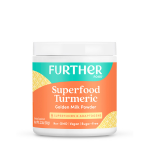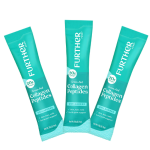Breast cancer is the one of the most common cancers among American women. While there is a genetic component to cancer, there is a lot we can do to minimize our risk and prevent breast cancer. In addition to regular doctor visits and self-awareness, we can decrease our risk for cancer through diet and lifestyle changes that can reduce inflammation and improve wellness. Here, renowned gynecologist and women’s sexual health expert Dr. Anna Cabeca shares her tips on reducing breast cancer risk, as well as the importance of early detection.
The facts don’t lie. Today, one in eight women in the United States will end up with breast cancer. Genetics only plays a role in a small amount of breast cancer, so whether we have a history of breast cancer or not, all women should take steps to reduce their risk as well as monitor their bodies for early detection. So, how do we lower our risk factors for breast cancer? By focusing on strengthening our immune system and reducing inflammation through diet, supplements and important lifestyle changes.
But first, do you know your risk of breast cancer?
Understanding Your Breast Cancer Risks
Breast cancer risk factors are well documented, so if you have any of these risk factors, extra vigilance is key to early detection for both you and family members.
- Prior breast cancer: If you have ever had breast cancer, it’s essential that you stay up-to-date with examinations. If you’ve had a breast biopsy that showed “lobular carcinoma in situ” or “atypical ductal hyperplasia,” this puts you at higher risk for cancer as well.
- Family history: The lifetime risk of being diagnosed with invasive breast cancer is about one in eight for women, but it’s about two to three times greater for women with a history of breast cancer in a first-degree relative (mother, sister or daughter) than in women with no family history of breast (or ovarian) cancer.
-
Other risk factors include:
- Multiple generations of family members affected by breast or ovarian cancer
- Relatives who were diagnosed with breast cancer before age 50 or who had both breasts affected by cancer
- Environmental factors, including exposure to ionizing radiation, exposure to DDT and contaminants of pesticides (this research has been inconsistent),
- Smoking as well as exposure to secondhand smoke.
- Obesity, especially weight gain in adulthood
- High-fat diets
- Alcohol use
- Older age of first child’s birth or never having a child
- Later menopause
- Prolonged hormone replacement therapy in menopausal women
Reducing Your Risk of Breast Cancer Through Diet and Lifestyle
Whether you have any of the risk factors above or not, you can take steps to reduce your risk for breast cancer. Your most important priority in reducing your risk for breast cancer is reducing inflammation. By controlling inflammation, you will be improving your overall wellbeing and health, and minimizing your risk for other chronic illnesses. The best way to control inflammation is through diet, in fact, I have seen diet changes that dramatically reduce inflammation. Here are my tips on what to eat to reduce inflammation as well as your risk for breast cancer:
Consider the Ketogenic diet:
A ketogenic diet consists of high fat, moderate protein and low carbohydrates for an extended period of time. Ketogenic diets help to reduce inflammation and blood sugar, in addition to a variety of other benefits, including helping with weight loss. Many people in the medical community are considering the ketogenic diet as an effective initial step in reducing underlying inflammation that causes so many chronic illnesses.
Alkaline Diet:
An alkaline diet emphasizes foods that “alkalize” the body, while eliminating foods that promote acidity. Individuals who have committed to an alkaline diet report less joint pain and menstrual discomfort and a reduction in chronic pain. Additionally, studies have confirmed that an alkaline diet has been linked with lower rates of cancer, cardiovascular disease and other chronic diseases. Studies have also shown that tumor growth actually increases in acidic environments, so reducing the acidity in your diet can help limit the growth of tumors.
Try Intermittent Fasting
Research indicates that breast cancer risks may be reduced by making changes not only in what you eat, but also when you eat. An August 2016 study found that the interval between dinner and breakfast had a significant impact on reducing breast cancer risk. As part of the study, investigators found that individuals had a significantly decreased risk of developing the disease if the time between breakfast and dinner was more than 12.5 hours. So, increasing the amount of times between meals, especially between dinner and breakfast, may be helpful in reducing your breast cancer risk.
My Keto-Alkaline (Keto-Green®) diet
I have developed a Keto-Green diet that combines the best practices of both the ketogenic diet and alkaline diet, as well as intermittent fasting. As I explained above, both a ketogenic diet and an alkaline diet have components that can help decrease your risk of breast cancer. Through this diet plan, you can significantly reduce inflammation, and decrease your risk for breast cancer, as well as other chronic illnesses. My eating plan is as follows:
1. 20 percent healthy protein (%based on calories)
2. 56-70 percent healthy fats (Trans fats and sugar are not healthy). Healthy saturated fats such as coconut oil, grass-fed butter and ghee. Healthy omega-9 fatty acids found in olive oil, sprouted nuts and seeds, avocados and almonds. Omega-3 fatty acids found in salmon, flax seeds and chia seeds.
3. 5-8 percent healthy carbs (This does not include unhealthy carbs such as sugar-sweetened beverages, fruit juices, pastries, white bread, white pasta or white rice!) Consider green veggies for health carbs because they are slow-burning carbs that also help with alkalinity!
Other steps you can take to reduce your breast cancer risk:
In addition to watching what you eat, here are my additional recommendations to reducing your risk for breast cancer:
1. Incorporate supplements into your daily diet: There are some supplements that I believe are particularly important for breast cancer prevention. These include turmeric, melatonin, and some vitamins, such as D, E, C and Omega 3s. For more specific recommendations and to learn more about my products, visit drannacabeca.com
2. Eat Walnuts: These delicious nuts are rich in antioxidants, omega-3s and phytosterols, all of which may help prevent cancer.
3. Cook with Mushrooms: Research has suggested that eating mushrooms regularly may help prevent breast disease. Researchers have found that mushrooms may curb estrogen production and strengthen the immune system at the same time.
4. Drink tea: A study found that women under 50 who drank 3 cups of tea per day had a 37% lower risk of breast cancer than those who didn’t drink tea. The preventative benefits of tea may be due to its flavonoids (a type of antioxidant) that may help reduce free-radical damage that can cause breast cancer.
5. Limit radiation: If possible, limit exposure to x-rays. A 2007 study in the International Journal of Cancer found that women gives diagnostic chest x-rays for pneumonia had two times the normal risk for breast cancer.
6. Limit red meat: A University of Leeds study found that older women who ate 2 ounces of red meat for seven years had a 56% higher risk of breast cancer than those who didn’t eat the red meat.
7. De-stress: Stress can have so many negative long term effects on our bodies, and it may even be linked to increased breast cancer risk. Try to make time to de-stress, whether it’s by meditating, going for a walk or taking a long bath.
9. Reduce alcohol consumption. Even one or two drinks a day may elevate your risk of breast tumors according to the National Cancer Institute. Limit yourself to one 4 oz glass of red wine with your meal.
10. Eat organic: The Mayo Clinic has found that women with elevated pesticide levels in their breast tissue have a higher cancer risk. Try to grow your own veggies and buy organic produce when you can.
11. Check your products: Be diligent about what you put in or on your body. Watch out for endocrine disrupting chemicals in your every day skin care and cleaning products.
Regular Self Examinations and Health Screenings Can Detect Breast Cancer Early
Whether you are at risk or not, I cannot stress the importance of preventative screenings. All women need to perform regular self exams and schedule doctor visits and screenings, which can all help in early detection.
Mammograms can save lives
Get a mammogram after 40 as recommended by your doctor then typically 1-2 years after. I recommend thermography as an excellent tool for evaluating the breast and it is without risk or radiation.
Although mammograms do not prevent breast cancer, they can detect it in its early stages. In fact, mammograms have been shown to lower the chance of dying from breast cancer by 35 percent in women who are 50 or older. As a gynecologist, my most recent guidance recommends a baseline mammogram at age 35 and then yearly mammograms beginning at age 40. You may consider less frequent mammography if getting thermography regularly as well
How To Perform Breast Exams
In addition to mammograms, self breast exams can be life-saving as well. Here’s how to perform one on yourself.
Step #1: While looking in a mirror, raise your hands above your head and look for any pulling or dimpling of the skin or inversion (pulling in) of the nipple. Look for changes to skin color, redness, swelling, change in nipple direction or lumps.
Step #2: Push your hands together over your head and then bring your arms down and push in at your waist using your chest muscles, while continuing to watch your breasts in a mirror. This motion will contract the pectoral muscles, making it possible to see a tumor that may be growing under the skin. Let your doctor know if there is any change, dimpling or irregularity to the skin.
Step #3: While seated or standing in the shower, examine your breasts with one hand over your head, feel with the opposite hand above your clavicle and under your arm for any lumps, bumps, irregularities or tenderness. Note any discharge. It is best to use the soft pads of your three middle fingers with soft, medium and deep pressure.
Be sure to examine the whole breast, from under the arm to the midline of your chest, then change sides and do it again. The motion you use to palpate is not necessarily important as long as you are consistent each time you do an exam. Being consistent will help you detect any changes.
Step #4: Repeat the breast exam laying down, just like you did while standing.
Step #5: Report any abnormal findings to your doctor and be sure to follow up.
Your physician should examine your breasts yearly using the same steps that you do at home and because a doctor may feel or see something that you do not in a self exam, it’s important to stay on top of these appointments.
Take Charge of Your Health
I know that testing and screenings can cause a lot of anxiety or even pain. (Mammograms can be uncomfortable!) However, early detection is crucial to curing breast cancer if it develops. Remember, you are always your best advocate and the front line for disease prevention and detection. Be sure to remember your annual screenings, perform self exams and do what you can to live a healthy lifestyle. You can make a difference in your health!
Easily add Further Food Daily Turmeric Tonic to anything for anti-inflammatory benefits!
Want to Read More?
How My Mother Survived Stage-4 Breast Cancer
6 Reasons Why You Should Be Eating Turmeric Daily
What Is Your Doctor Not Telling You? 5 Top Functional Medicine Doctors Tell All








